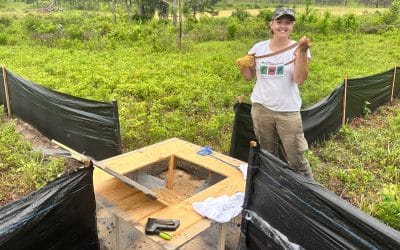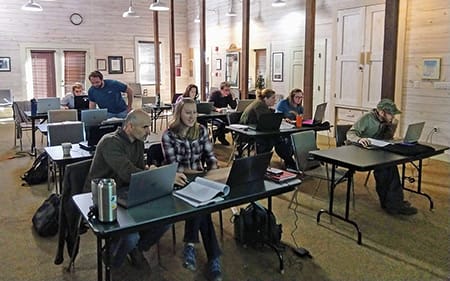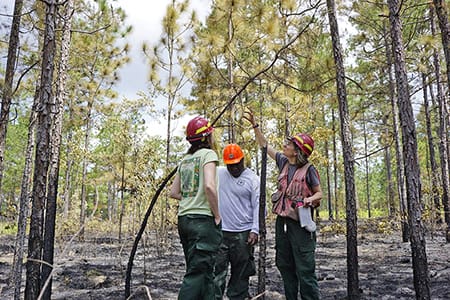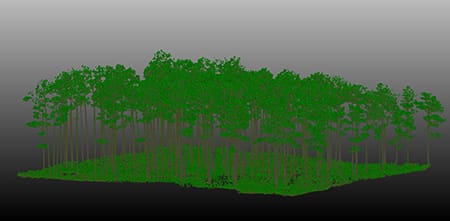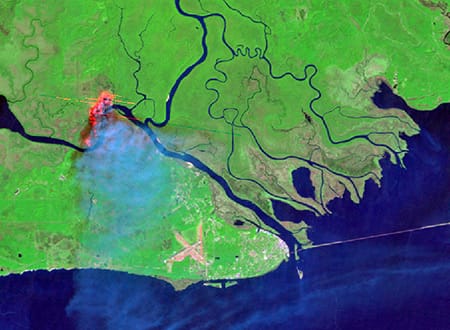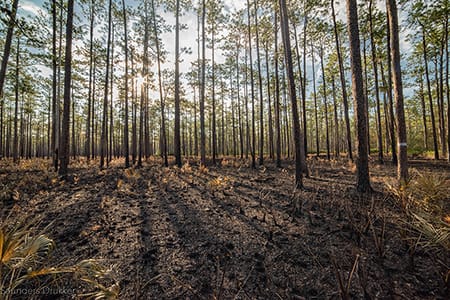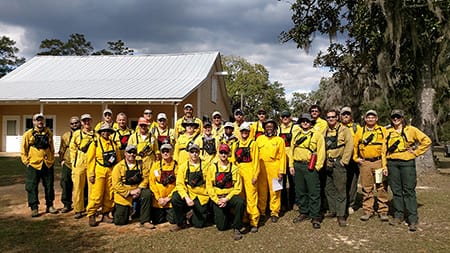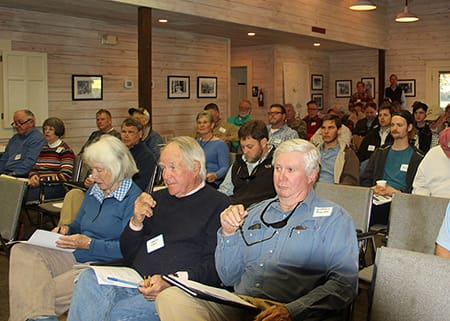The Fire Ecology Lab continues a long-standing collaboration with Dr. Yuch Ping Hsieh’s lab at the Florida A&M University (FAMU) Center for Water Resources. In one study, we are using a new method developed by Dr. Hsieh to test rates of soil microbial respiration, which is a key driver of ecosystem carbon cycling and carbon sequestration.
Whereas in the past such measurements required incubating soil and its microbes for days or weeks, his new method measures respiration rates in minutes, using a chemical indicator of the amount of carbon dioxide emitted from fresh samples. We are using the technique to compare soil microbial respiration among Tall Timbers Stoddard Plots burned at 1, 2, or 3-year intervals or unburned since 1960, to learn more about fire’s effects on this important ecosystem process.

1-year interval Stoddard Plot being burned in March.
Another project involving the Hsieh lab seeks to test a new method for measuring soil erosion. There are reasons to believe that the traditional use of erosion plots, or large, sloping troughs of soil sprinkled with water, greatly overestimate soil erosion on actual hill slopes.
Instead, the Hsieh lab seeks to use “mesh markers,” or pieces of mesh pressed closely to the ground, to measure soil displacement. The markers will be picked up after rain events and the amount of soil on them weighed, which will be used in equations that predict movement of soil on the slope.
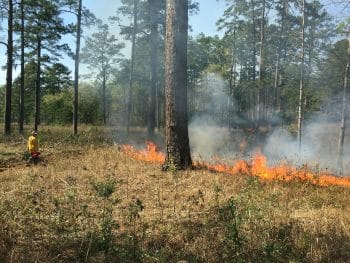
Erosion is being measured in an unburned area (the 23-acre NB66 plot on Tall Timbers), and an adjacent area that is burned every other year. The goal is to test the new method and to learn about how prescribed fire effects soil erosion.
Erosion is being measured in an unburned area (the 23-acre NB66 plot on Tall Timbers), and an adjacent area that is burned every other year. The goal is to test the new method and to learn about how prescribed fire effects soil erosion.
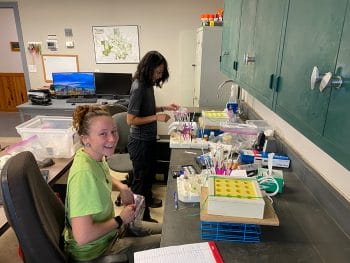
Tall Timbers Fire Ecology intern Haleigh Morgan (near) and FAMU scientist Glynnis Bugna (far) run lab analyses on soil samples to measure soil microbial respiration.
The effort has been assisted by FAMU scientist Dr. Glynnis Bugna and Fire Ecology intern Haleigh Morgan.






